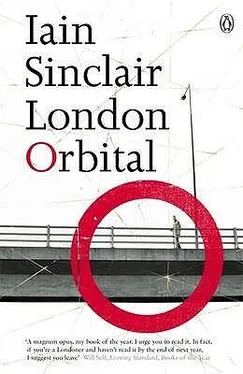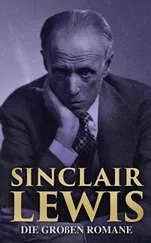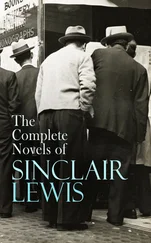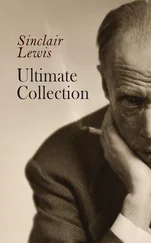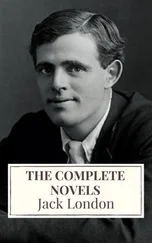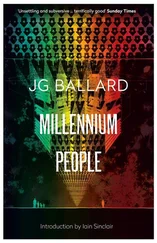Red-and-green streamers, Christmas lights, have been strung across the square — in anticipation of the Millennium Eve. Packs of tarot cards, essential oils, Egyptian cats and figurines are waiting in the New Age shop. Renchi and I head off on what now seems like a very short walk to the station.
There was a certain amount of discussion about dates: is it really the end of the century, the Millennium? Will the computers go haywire, bringing planes out of the sky? Or are we in for another misjudged English party with damp squibs?
The burghers of Waltham Abbey are very good at getting their hangovers in early, before they start on the serious celebrations. The damp town is bilious, yellow-tongued. (Looking forward to the drama of the spring floods.) Anna agreed to run us up the Lea Valley, to drop us, once again, at Harold’s grave.
30 December 1999. Renchi is back at work. Kevin has vanished — taken up residence in the Welsh Harp? Our orbital walk might never have happened. Marc Atkins is prepared to reverse that first excursion, out from the Dome. To mend the mistake, his damaged foot. He’s dressed for action: woollen commando beanie, tartan scarf, slithery non-combatant jacket. Camera. Film in pocket. No bags. Nothing to carry. A trick Kevin never learnt.
This time, we collect Marc from Limehouse. I don’t want there to be any misunderstandings or delays. He is signing on as official war photographer: to witness the final and absolute dissolution of the Millennium Dome.
Unconvinced drizzle. It’s still dark. Sky-leakage. No notes to be kept. My photo journal is a reflex indulgence, now that Marc is present. The cold eye of the landscape valuer.
We climb the embankment to the M25. We check out the spot where Bill Drummond kissed tarmac. It’s quite emotional, this parting from an old friend. Not much road traffic, nothing on the river. The sound, back in the abbey, was so precise, in the cold early-morning air; reinforcing the status of the church as an island within an island. By the time we reach the Lee, that clarity is lost. A solitary blue hut. Marc fumbles in the dark, changing his film. Then, just as he clicks the back of the camera shut, lights come on. Harsh, white. The lock is wired. The hut lit like a target.
Neck twisted, left eye closed, Marc squats beside the road, resting his Nikon on the crash barrier. With these photographs, the status of the M25 changes: it becomes historic, monumental. Fixed. Previously, in snapshots and sketches, it was family. No obligation to perform. Belt and braces, knotted handkerchief on head. ‘Hold that’ was neither spoken, nor implied. Marc’s concentration, his technique, brings the motorway into the canon, sets it alongside roads in other countries. That’s the difference between a packet of colour snaps and a commissioned portrait. You gain dignity, lose accident.
Already, we can see the blinking pyramid at the summit of the Canary Wharf tower, lined up with pylons and the black rule of water. RIFLES pub at Enfield Lock wishes: MERRY CHRISTMAS TO YOU ALL. Santa’s head like a trophy, above the Lee Enfield on the awning. Bagged one.
Too wet to dawdle. We push on towards Ponders End. A rose-red wall bellies out in a way that appeals to Marc. It’s topped with broken glass and razor wire. To protect a Flour Mill?
Ponders End, I like to think, is the model for Gerald Kersh’s Fowlers End. The 1958 novel by the prolific Kersh has always been Michael Moorcock’s favourite: ‘Everything in it is designed to reach the smallest possible audience — unpopular subject — sleazy characters — very funny.’ Moorcock wrote a foreword when the book was reissued. Fowlers End is the antidote to the whimsy of Peter Sellers, Margaret Rutherford, Bernard Miles, the charming stock company of British character actors in The Smallest Show on Earth. Which was released, to indulgent reviews and modest box-office success, in the year that Kersh’s ‘unpopular’ novel was published. Film and book exploit the same theme: the death of an independent cinema. One is sentimental, quirky and comic, while the other is deranged. Kersh is a master of haywire demotic, prose on the charge. At his best, as in Fowlers End , he achieves that impossible thing: he comes out as a Jewish Céline.
This is how you find Fowlers End — by going northward, step by step, into the neighbourhoods that most strongly repel you. The compass of your revulsion may flicker for a moment at the end of the Tottenham Court Road, especially on a rainy March morning…
Do not be led astray by this; go north to Edmonton and Ponders End. Who Ponder was and how he ended, the merciful God knows. Once upon a time it was a quagmire; now it is a swamp, biding its time. Further yet, bearing northeast, lies a graveyard of broken boilers and rusty wheels… where creatures that once were men live in abandoned railway carriages…
Here the city gives up the game.
This is it.
Fowlers End is a special kind of tundra that supports nothing gracious in the way of flora and fauna… Even the dogs are throw-backs to their yellow-eyed predatory ancestors that slunk in the trail of sub-men and ate filth. There is a High Street about a hundred yards long, and the most woebegone railway terminal on the face of the earth…
Flattering but true, Kersh’s travelogue needs no revision. Ponders End is a knot in the railway, roadkill returned to life. There’s a pub called the Falcon, with a yellow field gun parked outside; presumably ‘borrowed’ from the Small Arms Factory at Enfield. The gun strikes a sinister note, as it fails to protect a trashed telephone kiosk and a crop of tower blocks, SORRY NO TRAVELLERS. Reasonable advice. But sticking a howitzer on the pavement is excessive.
Rain seeps and slithers. The PONDERS END WORKING MENS CLUB, for all its pebbledash pretensions, can’t have many bona fide members. Who works? Five or six bright windows in a plantation of tower blocks. Recidivists used to perpetual illumination, overhead lights that can’t be switched off. Twenty-four-hour dealers. Insomniacs rummaging through medicine cabinets.
SALON SNIPPETS PAITIENT MODELS REQUIRED FOR FOILS/CUTTING + NAIL EXTENSIONS. Marc of course has experience in hairdressing. He shaves his own skull, cuts the hair of his partner (and anyone else who is up for it). But the deployment of ‘foils’ is a sophistication he hasn’t acquired. Colour pads pressed to the head in a curious rite.
Ponders End is bereft of the ‘paitient’, models or otherwise. The place is deserted. A Dalmatian picking through a heap of burst bin bags; wolf-red eyes. Noise is a constant: speeding trains, fork-lift trucks which bleep as they reverse, generators, sirens. An industrial soundtrack and no industry.
A trembling refugee, sheltering under the railway bridge, won’t admit that the town runs to a cafe. He shakes his head, astonished at the idea. A security man from the Flour Mill thinks that there might be somewhere ‘foreign’, ten minutes down the road.
He’s right. It is foreign. And schizophrenic. CLOSED CAFE OPEN. The fry-up is excellent (‘bubble and bacon’), the tables clean. It must be a front for something. We are the only customers. Marc loves Ponders End. ‘I only photograph empty railway lines, empty streets,’ he says. ‘People — I find a way to keep them out.’
Settled at his Formica desk, he taps messages into his new mobile phone; receives his first calls. He’s been given a £ 20,000 commission to photograph mathematicians. The show at the National Institute for Medical Research is clinched.
The harder the rain comes down, the faster we stride. We’re erasing everything we investigated on the original walk. The smoke from the burning stack at the London Waste facility in Edmonton is indistinguishable from river mist, spray from the elevated carriageway. The sky has dropped.
Читать дальше
